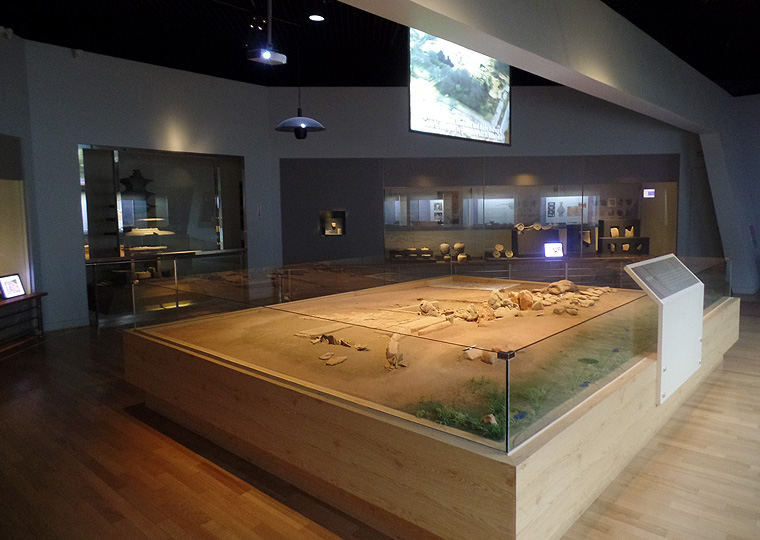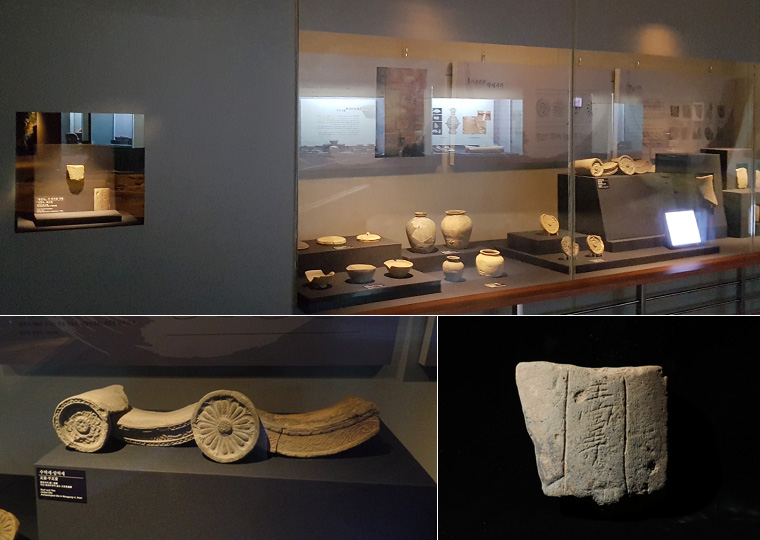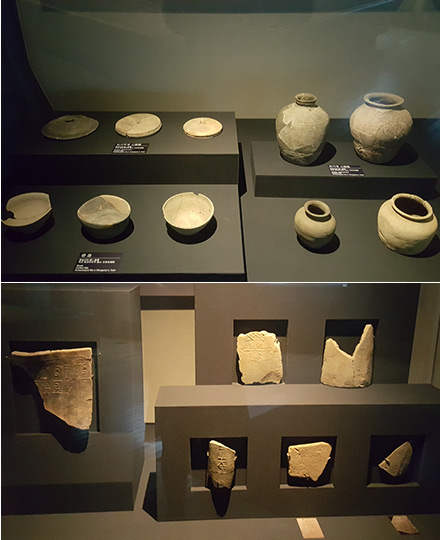Change from the Royal Palace to the Temple
The Wanggung-ri Site Museum is configured in five themes. Viewing the exhibitions in sequence is recommended.
Select any exhibition hall in Wanggung-ri Site Museum and the details regarding the exhibition hall are displayed.

④ Change from the Royal Palace to the Temple
- The Baekje royal palace was used for a certain period and was converted to a temple, including a pagoda, main building and auditorium, after demolition of the important buildings of the royal palace. There are no materials that explain the reasons for and period of change from the royal palace to the temple. Several roof tiles on which ‘Daegwangwansa Temple’ was inscribed were found near the western and northern boundary wall in the royal palace during excavation. It was written that the ‘water of the well in Daegwansa Temple changed to blood red and the blood red water ran in a width of 5 Bo in the land of Gumma-gun’ in the records for June in the 8th year of King Taejong Muyeol, the Annals of Silla, the History of the Three Kingdoms. The record was written in 661. If the ‘Daegwansa Temple’ in Geuma-gun is the ‘Daegwangwansa Temple’ of the Archaeological Site in Wanggung-ri, it appears that the change of the royal palace to a temple occurred during the reign of King Uija in the Baekje period at the latest.
- If so, it is necessary to think about the period when it was used as the Baekje royal palace prior to analyzing the reasons for the change from royal palace to temple. While it is definite that the Baekje royal palace was used mainly during the reign of King Mu in the Baekje period, there are different opinions regarding the beginning and ending period as the royal palace. Some consider that the royal palace in Iksan was from the reign of King Beop or King Wideok before King Mu. While the Baekje royal palace definitely returned to Buyeon during the reign of King Uija, some consider that this was at the end of the reign of King Mu.
- In conclusion, while the Archaeological Site in Wanggung-ri was the royal palace of Baekje, it was converted to a temple after the Baekje royal palace was moved to Buyeo. The reason was that after King Mu passed away and was buried in the Iksan twin tombs, the royal palace was converted by King Uija to use the former royal palace as a memorial temple to pray for the repose of King Mu. Thus, the central axis of the royal palace was on the same line as that of the temple. The temple had a pagoda, main building and auditorium but had no corridor, unlike general temples of the Baekje period. The gates and boundary walls of the royal palace were used without any changes being made.
- Several Baekje royal palace buildings would remain in the areas apart from the areas where the temple buildings were arranged. While the Baekje royal palace was converted to a temple, this temple would not have been a general temple but was related to the royal palace. This assumption is supported by the roof files where ‘Wanggungsa Temple’, ‘Daegwangwansa Temple’ and ‘Gwangungsa Temple’ were inscribed around the temple site.
- IIt seems that the wooden pagoda existed instead of the present stone pagoda during the time of conversion to a temple. A rectangular plate layer 17m wide was found under the stone pagoda. The sarira hole in a 品 shape and the internal structure of the wooden pagoda including four octagonal columns were found in the process of dismantling and maintaining the Wanggung-ri 5-Story Stone Pagoda in 1965.




